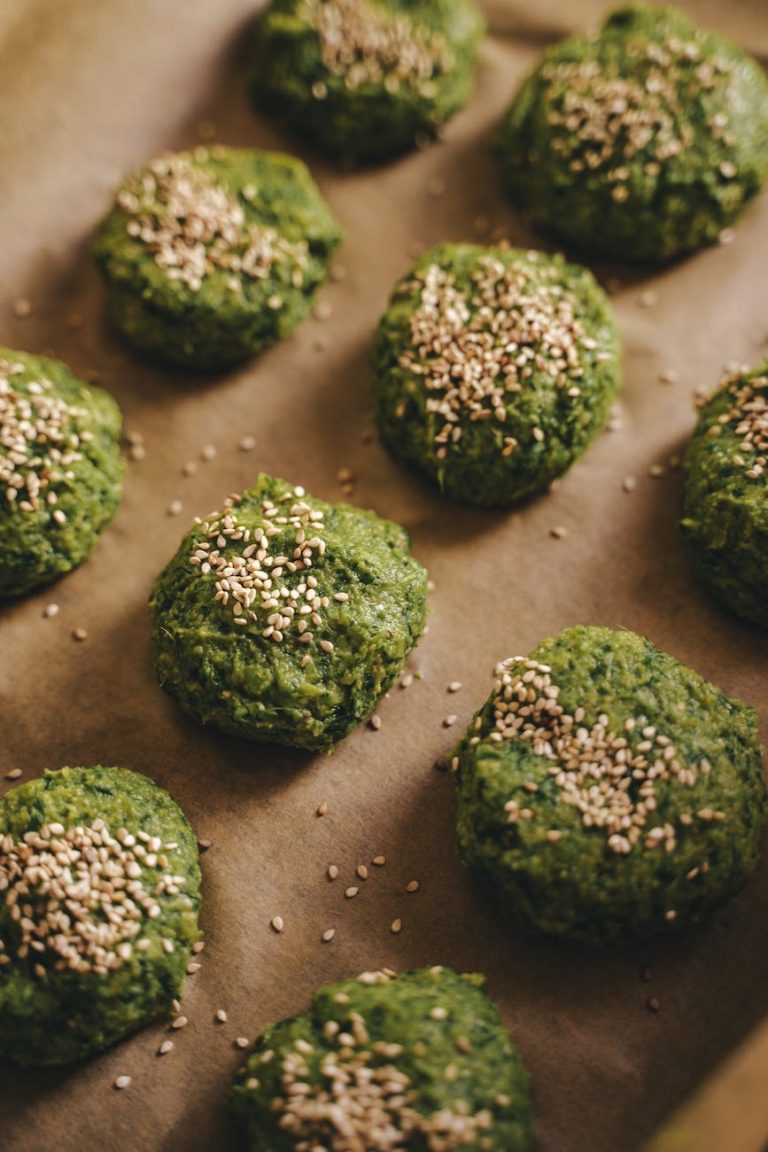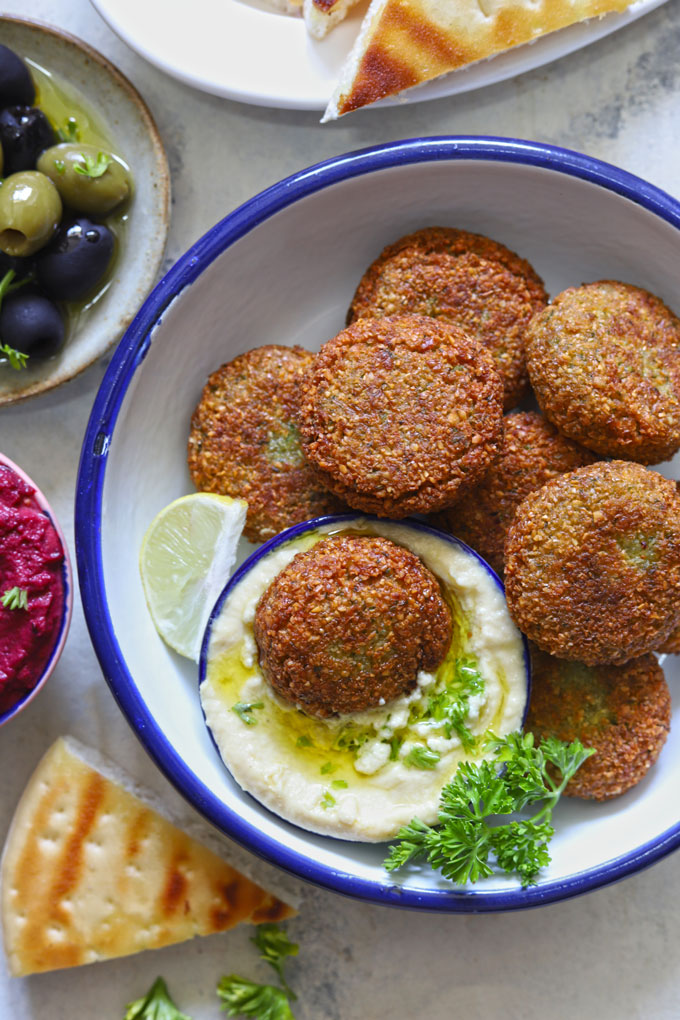A Deep Dive into Falafel: From Humble Beginnings to Global Delights
Related Articles
- A Deep Dive Into Bebek Goreng: The Art Of Crispy, Flavorful Fried Duck
- A Journey Through The World Of Gelato: From Ancient Roots To Modern Delights
- Indian Chaat: The Best Street Snacks You Can Recreate In Your Own Kitchen
- Plant-Based BBQ: Delicious Meat Alternatives For Your Next Cookout
- Ossobuco: A Journey Through Italian Culinary Tradition
Introduction
Join us as we explore A Deep Dive into Falafel: From Humble Beginnings to Global Delights, packed with exciting updates
A Deep Dive into Falafel: From Humble Beginnings to Global Delights

Falafel, those crunchy, savory balls of chickpea goodness, have become a culinary staple across the globe. But this seemingly simple street food has a rich history and a surprising amount of culinary depth. This article takes you on a journey into the world of falafel, exploring its origins, variations, cooking techniques, and the endless possibilities it offers for delicious meals.
From Humble Beginnings to Global Phenomenon
The origins of falafel are shrouded in some mystery, but most historians agree it likely originated in the Middle East, specifically in Egypt. While the exact date is unknown, it’s believed that falafel has been enjoyed for centuries, with some evidence suggesting it dates back to the 10th century.
Early falafel was likely a simple dish, made with chickpeas, herbs, and spices, formed into small balls and fried in oil. It was a popular food among the working class, providing a cheap and filling meal.
Over time, falafel spread across the Middle East, evolving with regional variations and flavors. In Lebanon, for instance, it’s often served in pita bread with hummus, tahini, and vegetables. In Israel, falafel is a national treasure, enjoyed in countless variations, from the classic pita wrap to more elaborate salads and platters.
The 20th century saw falafel’s global rise. With the influx of Middle Eastern immigrants to Europe and North America, the dish began to gain popularity in new territories. Today, falafel is a beloved street food and restaurant staple in cities around the world, embraced for its delicious flavors, versatility, and affordability.
The Magic of Chickpeas
Falafel’s unique flavor and texture stem from its key ingredient: the humble chickpea. These legumes, also known as garbanzo beans, are a powerhouse of protein, fiber, and essential nutrients. They possess a mildly nutty flavor that lends itself beautifully to various seasonings and cooking methods.
Chickpeas are incredibly versatile. They can be enjoyed boiled, roasted, or ground into flour. In the case of falafel, the chickpeas are soaked, ground, and then blended with a combination of herbs, spices, and other ingredients. This mixture is then shaped into balls or patties, and fried to crispy perfection.
Mastering the Art of Falafel: A Step-by-Step Guide

Making falafel from scratch is a rewarding culinary experience. Here’s a comprehensive guide to help you create delicious falafel at home:
1. Soaking the Chickpeas:
- Start by soaking your chickpeas overnight in plenty of cold water. This softens them, making them easier to grind.
- The soaking time can vary depending on the age of the chickpeas. Older chickpeas may require a longer soak.
- You can add a pinch of baking soda to the soaking water to help soften the chickpeas further.
2. Grinding the Chickpeas:
- Drain and rinse the soaked chickpeas.
- Grind the chickpeas in a food processor or blender until they reach a coarse, paste-like consistency.
- Don’t over-process the chickpeas. You want them to have a slightly grainy texture.
3. Adding Flavor and Texture:

- Once the chickpeas are ground, add your chosen herbs and spices. Common additions include parsley, cilantro, cumin, coriander, garlic, and onion.
- Experiment with different combinations to create your own unique flavor profile.
- For added texture, you can add finely chopped onions, garlic, or even a handful of breadcrumbs.
4. Shaping the Falafel:
- Once the mixture is well combined, use your hands to form the falafel into small balls or patties.
- Wet your hands with water to prevent the mixture from sticking.
- You can also use a small cookie scoop to form perfectly sized falafel balls.
5. Frying the Falafel:
- Heat a generous amount of oil in a large skillet or deep fryer.
- The oil should be hot enough to sizzle when you add a small piece of falafel.
- Carefully add the falafel to the hot oil, making sure not to overcrowd the pan.
- Fry the falafel for about 3-5 minutes on each side, or until golden brown and crispy.
6. Serving the Falafel:
- Remove the cooked falafel from the oil and drain on paper towels.
- Serve hot with your favorite toppings, such as hummus, tahini, pickles, tomatoes, onions, and salad.
- Falafel is also delicious in pita bread, wrapped with a variety of fillings.
Beyond the Basics: Exploring Falafel Variations
While the classic falafel recipe is a culinary delight, the beauty of this dish lies in its adaptability. Here are some exciting variations to explore:
1. The Herb Garden:
- Experiment with different herb combinations. Mint, dill, chives, and even basil can add unique flavors to your falafel.
- Try adding a pinch of sumac for a tangy and earthy touch.
2. Spicy Delights:
- Incorporate chili peppers, cayenne pepper, or harissa paste for a fiery kick.
- For a milder heat, try adding a touch of paprika or chili powder.
3. Nutty and Crunchy:
- Add toasted sesame seeds, walnuts, or pine nuts to your falafel mixture for a delightful crunch.
- These nuts also add a rich, nutty flavor to the dish.
4. The Vegetarian Powerhouse:
- Add quinoa, bulgur, or chopped vegetables like carrots or zucchini to your falafel mixture for extra protein and fiber.
5. Beyond Frying:
- Falafel doesn’t have to be fried. You can bake it in the oven or even air fry it for a healthier option.
- Baking or air frying will result in a slightly less crispy texture, but still delicious.
Building a Falafel Feast: Delicious Dishes and Creative Combos
Falafel is more than just a street food; it’s a blank canvas for culinary creativity. Here are some ideas to elevate your falafel experience:
1. The Classic Falafel Wrap:
- This is the quintessential falafel experience. Warm pita bread stuffed with falafel, hummus, tahini, pickles, tomatoes, and onions.
- Choose your favorite toppings and get creative with different sauces and dressings.
2. Falafel Salad Bowl:
- Combine a bed of fresh greens with falafel, chopped vegetables, chickpeas, and a drizzle of tahini dressing.
- Add a sprinkle of pomegranate seeds for a burst of sweetness and acidity.
3. Falafel Pita Pizza:
- Spread hummus on a pita bread base and top with falafel, feta cheese, olives, and roasted vegetables.
- Bake in the oven until the cheese is melted and bubbly.
4. Falafel Skewers:
- Alternate falafel balls with cherry tomatoes, bell peppers, and red onion on skewers.
- Grill or bake the skewers until the vegetables are tender and the falafel is crispy.
5. Falafel Burger:
- Crumble cooked falafel and mix it with chopped vegetables, herbs, and spices.
- Form the mixture into patties and grill or pan-fry them.
- Serve on burger buns with your favorite toppings.
Culinary Tips and Tricks for Falafel Perfection
- The Secret to Crispness: Don’t overcrowd the pan when frying your falafel. This ensures even cooking and a crispy exterior.
- Seasoning Magic: Don’t be afraid to experiment with different herb and spice combinations. A pinch of cumin, coriander, and paprika can make all the difference.
- The Power of Tahini: Tahini is a sesame seed paste that adds a rich, nutty flavor to falafel. Use it as a dip, dressing, or spread.
- Homemade Hummus: For the ultimate falafel experience, make your own hummus. It’s easier than you think and adds a depth of flavor that store-bought hummus can’t match.
- Don’t Forget the Pickles: Pickles are a classic falafel topping that adds a refreshing tanginess to the dish.
- Leftovers are a Treat: Falafel can be easily reheated and enjoyed the next day. Simply fry them again in a little oil or bake them in the oven until crispy.
Falafel: A Culinary Journey of Flavor and Tradition
Falafel is more than just a food; it’s a cultural icon, a symbol of culinary heritage, and a testament to the power of simple ingredients to create extraordinary flavors. From its humble origins in the Middle East to its global popularity, falafel has become a beloved dish that continues to delight and inspire cooks and eaters alike. So, whether you’re a seasoned chef or a culinary novice, explore the world of falafel, experiment with different recipes, and discover the endless possibilities this versatile dish has to offer.
Closure
Thank you for reading! Stay with us for more insights on A Deep Dive into Falafel: From Humble Beginnings to Global Delights.
Make sure to follow us for more exciting news and reviews.
Feel free to share your experience with A Deep Dive into Falafel: From Humble Beginnings to Global Delights in the comment section.
Stay informed with our next updates on A Deep Dive into Falafel: From Humble Beginnings to Global Delights and other exciting topics.






